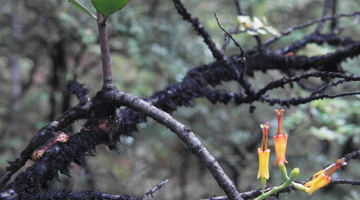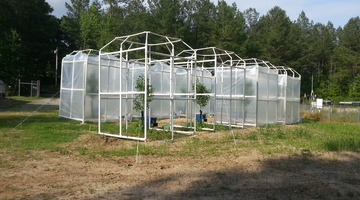

In some of the beech forests of New Zealand, bright red or yellow mistletoe flowers stand out in the summer. The colour attracts native birds, which drink the nectar and pollinate the flowers at ...
READ MORE

Botany is the scientific study of plants. This field of study encompasses terrestrial, freshwater and ocean plants, as well as algae and some non-plants like fungi. Rights: The University of ...
READ MORE

In a corner of a laboratory at Massey University’s Institute of Technology and Engineering, plants are growing under bright lights. They look out of place amongst all the high-tech equipment, yet ...
READ MORE

In this activity, students plan a storyboard along the lines of television shows such as Man vs. Wild and Survivor to illustrate how humans can use ferns to survive in the bush. Note: With much ...
READ MORE

This citizen science project wants your assistance to extract information from various climate scientific graphics to help combat misinformation and support scientific communication. Using this ...
READ MORE

By comparing some features of fossilised plants with the same features of plants living today, scientists hope to be able to learn more about the effect of changing carbon dioxide (CO2) levels in ...
READ MORE

iNaturalist logs hundreds of thousands of photos of flora, fauna and fungi. There are even sound recordings too. Each is described and geo located. iNaturalist is used by citizens and scientists ...
READ MORE

In this recorded professional learning session Chloe Stantiall and Greta Dromgool share their experiences exploring mātauranga as pākehā educators in English medium classrooms. Chloe Stantiall is ...
READ MORE

When well managed, class discussion can help students examine, evaluate and share knowledge about a subject, providing opportunities for students to think critically and creatively, consider ...
READ MORE

Primary Science Week 2016 has a focus on soil. Don’t confuse dirt with soil – did you know there are more living things in a teaspoon of healthy soil than there are people alive on the Earth? Dig ...
READ MORE
Dave Kelly the of University of Canterbury explains why native mistletoes are declining. He also talks about the research that he and Jenny Ladley carry out in Craigieburn Forest Park in the ...
READ MORE
Dr Leon Perrie is a Botany Curator at the Museum of New Zealand Te Papa Tongarewa in Wellington. Leon explains how learning about plants opened up a new world for him. Point of interest: Leon ...
READ MORE
Prof Richard Haverkamp, of Massey University, outlines why he uses plants to make gold nanoparticles. There are also views of Dr Aaron Marshall and the electrolysis equipment used to test ...
READ MORE

This Slideshow, from the webinar Exploring mātauranga in the classroom, provides additional support for the video tutorial.
READ MORE

Discover a range of scientific approaches – select a label for videos and more information to support your understanding.
READ MORE

Sea stars have many weird and wonderful adaptations including both sexual and asexual reproduction. Click on any of the labels in this interactive to view short video clips or images to learn ...
READ MORE